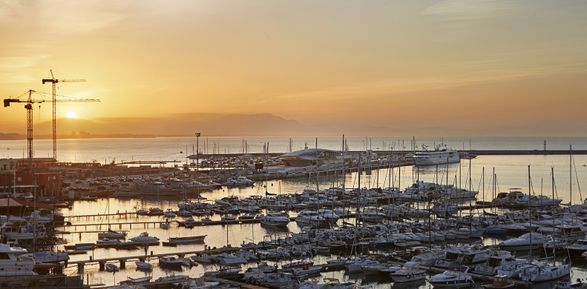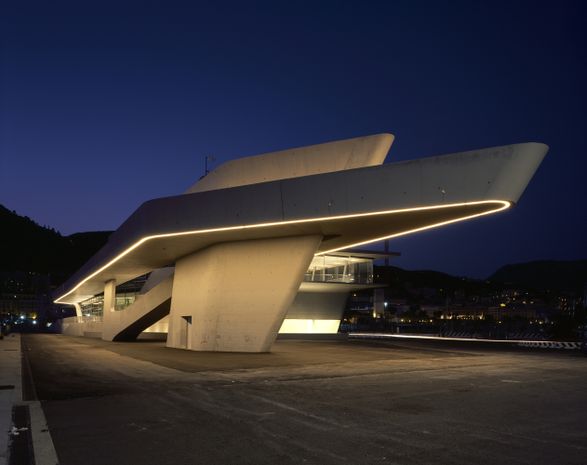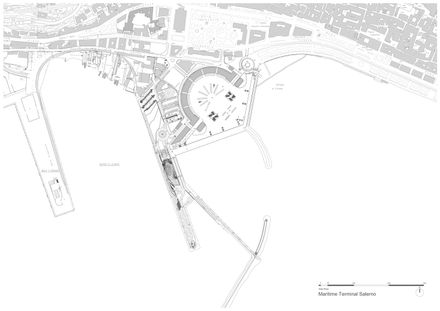ARCHITECTS
Zaha Hadid Architects
ZHA PROJECT ARHITECT
Paola Cattarin
PHOTOGRAPHS
Hélène Binet, Hufton+Crow
MANUFACTURERS
Artigo
AREA
4500.0 sqm
PROJECT YEAR
2016
ZHA COMPETITION TEAM
Paola Cattarin, Sonia Villaseca, Christos Passas, Chris Dopheide
LIGHTING
Equation Lighting, Mark Hensmann
STRUCTURAL ENGINEERS
Ingeco, Ove Arup & Partners, Sophie Le Bourva, Francesco Sylos Labini
ZHA PROJECT ARCHITECT
Paola Cattarin
LOCATION
Stazione Marittima di Salerno, 84121 Salerno SA, Italy
CATEGORY
Port
MARITIME/TRANSPORT ENGINEERING
Greg Heigh, Ove Arup & Partners
COST
Building Consulting, Pasquale Miele
LOCAL EXECUTIVE ARCHITECT
Interplan Seconda, Alessandro Gubitosi
COSTING
Building Consulting - Pasquale Miele
MECHANICAL & ELECTRICAL ENGINEERS
Itaca srl, Ove Arup & Partners, Macchiaroli and Partners, Felice Marotta, Roberto Macchiaroli
ZHADESIGN TEAM
Vincenzo Barilari, Andrea Parenti, Anja Simons, Giovanna Sylos Labini, Cedric Libert, Filippo Innocenti, Paolo Zilli, Lorenzo Grifantini
Text description provided by architect.
Inaugurated on 25 April 2016, the new Salerno Maritime Terminal by Zaha Hadid Architects is integral to the city’s urban plan.
Begun by Mayor Vincenzo De Luca, now Governor of the Campania Region, and continued under the city’s current Mayor Vincenzo Napoli, the 1993 plan for Salerno targeted the development of essential projects and programs for the social, economic and environmental regeneration of the city.
As part of the 1993 plan, Zaha Hadid Architects won the international competition in 2000 to design the new terminal.
Located on the public quay that extends into Salerno’s working harbor and marina, the new maritime terminal continues the city’s relationship with the sea and establishes new links; connecting Salerno’s rich maritime traditions with its historic urban fabric and beyond to the hills that frame the city.
Like an oyster, the terminal’s hard, asymmetric shell protects the softer elements within; sheltering passengers from the intense Mediterranean sun during the popular tourist season.
The new maritime terminal is composed of three primary interlocking components: administration offices for national border controls and shipping lines; the terminal for international ferries and cruise ships from around the world; and the terminal for the local and regional ferries.
The quayside gently rises as passengers approach the terminal from the city, indicating the gradually sloping path of ramps within the building which raise passengers to the embarking level of large ships and ferries.
The terminal’s interior arrangement orientates and leads passengers through a sequence of interior spaces that flow into each other and are organized around focal points such as the restaurant and the waiting lounge.
Local and regional ferry commuters move through the terminal quickly, arriving on ground level and ascending via ramps to reach the upper and vessel entrance.
Passengers travelling on international ferries and cruise ships are guided seamlessly through check-in, passport, security and customs controls to their ship. Arriving passengers follow a similar progression through the terminal with the inclusion of the luggage reclaim area.
The new terminal operates, both functionally and visually, as a smooth transition between land and sea; a coastal land formation that mediates between solid and liquid.
From its terraces and windows, the terminal offers spectacular views of the Amalfi Coast, the Gulf of Salerno and the Cilento. Positano, Capri, Paestum and Pompei are also nearby.
The new terminal will greatly improve the accessibility and experience for visitors to the region’s renowned cultural attractions, coastline and countryside.
The new Salerno Maritime Terminal will enable the port of Salerno to increase arrivals of ferry and cruise ships by 500,000 additional passengers each year, which would create up to 2,000 new jobs in the city’s hospitality, services and retail sectors.


























